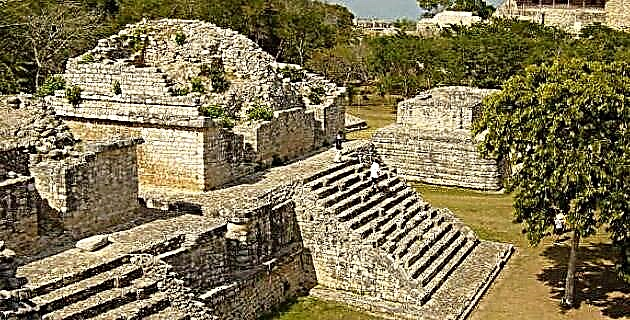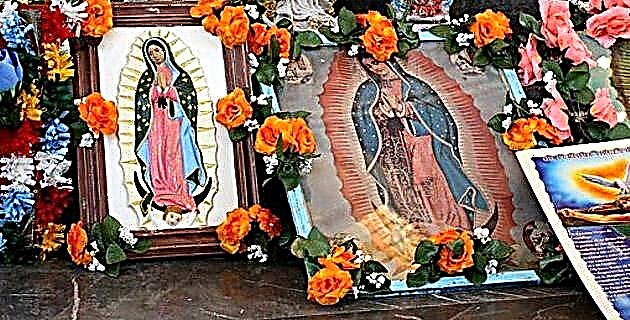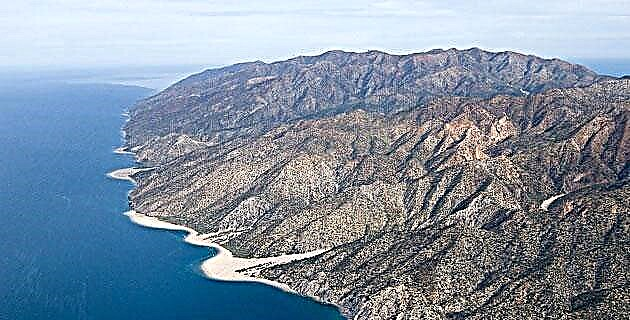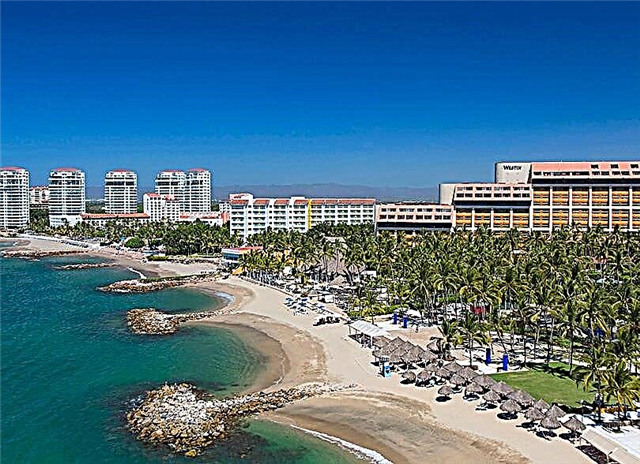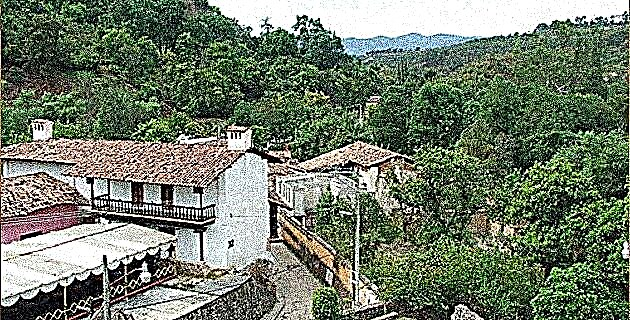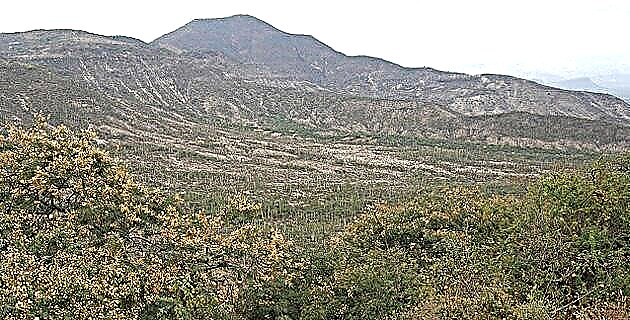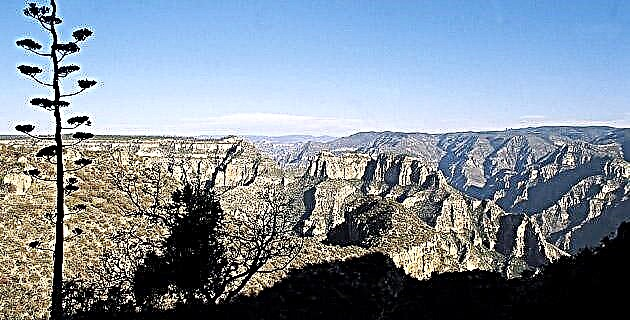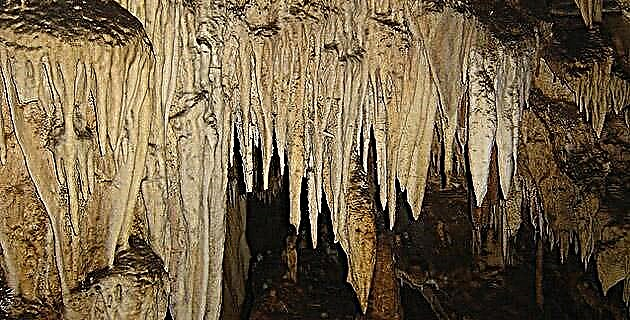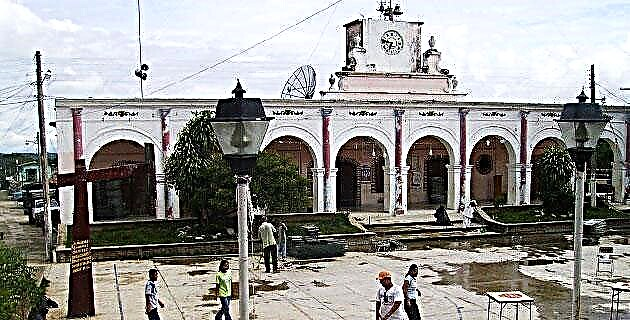
This small ethnic group that lives between the limits of Oaxaca and Guerrero draws attention for the strength with which it preserves its traditions. At first glance, the beautiful clothing that distinguishes them stands out.
The impressive landscapes of the mountains pleasantly surprise those who decide to enter the Mixteca. A great variety of colors are mixed: multiple variations of green, yellow, brown, terracotta; and the blues, when visited by the white, announce the rain that nourishes the entire region. This visual beauty is the first gift with which visitors are honored.
We head towards Santiago Pinotepa Nacional; in the highest part of the sierra are the cities of Tlaxiaco and Putla, gateways to many Mixtec and Triqui communities. We continue our route down towards the coast, a few kilometers before reaching it we arrive at San Pedro Amuzgos, which in its original language is called Tzjon Non (also written as Tajon Noan) and means "town of yarns": it is the Amuzga municipal head the Oaxaca side.
There, as in the places we would visit later, we were surprised by the nobility of its people, their vitality and the cordial treatment. As we walk through its streets, we come to one of the four schools that exist there; We were struck by how dozens of girls and boys, between laughter and games, participated in the construction of a new classroom; His work consisted of transporting water for the mixture, in boats according to the size of each person. One of the teachers explained to us that they used to take charge of the heavy or complex tasks among all those carried out by the community; in this case the work of the little ones was essential, since they brought water from a small stream. "There is still and we take great care of the water," he told us. While the little ones had fun with their homework and did speed competitions, the teachers and some of the children's parents carried out the tasks destined to build the new part of the school. So everyone collaborates in an important task and "they are appreciated more," said the teacher. The custom of doing work collectively to achieve a common goal is very common in Oaxaca; in the isthmus it is known asguelaguetza, and in the Mixteca they call it tequio.
The Amuzgos or Amochcos are a peculiar people. Although the Mixtecos, with whom they are related, have been influenced by their neighbors, their customs and their own language remain in force and in some aspects have been strengthened. They are famous in the lower Mixtec region and on the coast for their knowledge of wild plants with therapeutic uses, and also for the great development achieved in traditional medicine, in which they have a lot of confidence, since they assure that it is much more effective.
To learn more about this town, we try to get closer to its history: we discovered that the word amuzgo comes from the word amoxco (from the Nahuatl amoxtli, book, and co, locative); therefore, amuzgo would mean: “place of books”.
According to the socioeconomic indicators of the census carried out by the INI in 1993, this ethnic group was made up of 23,456 Amuzgos in the state of Guerrero and 4,217 in Oaxaca, all speakers of their native language. Only in Ometepec is Spanish used more than Amuzgo; In the other communities, the inhabitants speak their language and there are few people who speak Spanish well.
Later we continue towards Santiago Pinotepa Nacional and from there we take the road that goes to the port of Acapulco, in search of the deviation that goes up to Ometepec, the largest of the Amuzgo towns. It has characteristics of a small city, there are a number of hotels and restaurants, and it is the obligatory rest before going up to the mountains on the Guerrero side. We visit the Sunday market, where they come from the most remote Amuzga communities to sell or barter for their products and get what they need to take home. Ometepec is mostly mestizo and has a mulatto population.
In the early morning we headed for the mountains. Our goal was to reach the communities of Xochistlahuaca. The day was perfect: clear, and from early on the heat was felt. The road was fine up to a point; then it looked like clay. In one of the first communities we find a procession. We asked what the reason was and they told us that they had taken San Agustín to ask him to rain, because the drought was hurting them a lot. Only then did we become aware of a curious phenomenon: up in the mountains we had seen rain, but in the coastal area and lower the heat was oppressive and indeed there was no sign that some water was going to fall. In the procession, the men in the center carried the saint, and the women, who were the majority, were forming a kind of escort, each with a bouquet of flowers in their hands, and they prayed and sang in Amuzgo.
Later we find a funeral. The men of the community quietly and calmly took out the coffins and asked us not to take photographs. They walked slowly towards the pantheon and indicated that we could not accompany them; we saw that a group of ladies awaited the arrival of the procession with bouquets of flowers similar to those we had seen in the procession. They stood in front and the group walked through the canyon.
Although the Amuzgos are mostly Catholic, they combine their religious practices with rites of pre-Hispanic origin dedicated mainly to agriculture; They pray to receive abundant harvest and invoke the protection of nature, the canyons, the rivers, the mountains, the rain, of course the sun king and other natural manifestations.
Upon reaching Xochistlahuaca, we found a beautiful town with white houses and red tile roofs. We were surprised by the impeccable cleanliness of its cobbled streets and sidewalks. As we walked through them, we got to know the community embroidery and spinning workshop coordinated by Evangelina, who speaks some Spanish and is therefore the representative and in charge of attending to the visitors who come to know the work they do there.
We share with Evangelina and other ladies while they work; They told us how they do the whole process, from carding the thread, weaving the fabric, making the garment and finally embroidering it with that good taste and neatness that characterizes them, a skill that is transmitted from mothers to daughters, for generations.
We visit the market and laugh with the elcuetero, a character who travels through the towns in the area carrying the essentials for the festivities. We also spoke with the thread vendor, who brings them from another more remote community, for the ladies who are unwilling or unable to produce their own embroidery threads.
The main economic activity of the Amuzgo people is agriculture, which only allows them a modest life, like most of the small agricultural communities in our country. Its main crops are: corn, beans, chili, peanuts, squash, sweet potatoes, sugarcane, hibiscus, tomatoes and others of less relevance. They have a great variety of fruit trees, among which stand out mangoes, orange trees, papayas, watermelons and pineapples. They are also dedicated to raising cattle, pigs, goats and horses, as well as poultry and also collect honey. In Amuzga communities, it is common to see women carrying buckets on their heads, in which they carry their purchases or the products intended for sale, although barter is more common among them than exchange in money.
The Amuzgos live in the lower part of the Sierra Madre del Sur, on the border of the states of Guerrero and Oaxaca. The climate in your region is semi-warm and is governed by the humidity systems that come from the Pacific Ocean. It is common in the area to see reddish soils, due to the high degree of oxidation they present.
The main Amuzga communities in Guerrero are: Ometepec, Igualapa, Xochistlahuaca, Tlacoachistlahuaca and Cosuyoapan; and in the state of Oaxaca: San Pedro Amuzguso and San Juan Cacahuatepec. They live at an altitude that ranges from 500 meters above sea level, where San Pedro Amuzgos is located, at an altitude of 900 meters, in the most rugged places of the mountainous portion where they are settled. This mountain range is called the Sierra de Yucoyagua, which divides the basins formed by the Ometepec and La Arena rivers.
One of their most important activities, as we were able to corroborate in our trip, is carried out by women: we refer to the beautiful embroidered dresses that they make for their own use and to sell to other communities - although they earn little from them, Since, as they say, hand embroidery is very "laborious" and they cannot charge the prices that are really worth, as they would be very expensive and they could not sell them. The places where most of the dresses and blouses are made are Xochistlahuaca and San Pedro Amuzgos. Ladies, girls, young people and old women wear their traditional costumes daily and with great pride.
Walking through those streets of reddish earth, with white houses with red roofs and abundant vegetation, responding to the greeting of everyone who passes by, has a pleasant charm for those of us who live the city maelstrom; It transports us to remote times where, as it happens there, man used to be more human and friendly.
LOS AMUZGOS: THEIR MUSIC AND DANCE
Within the Oaxacan traditions, the multitude of dances and dances performed stand out with a peculiar stamp, either in certain social events or on the occasion of the celebration of a church festival. The sense of the rite, of religious ceremonial around which man has created dance since primitive times, is what informs and animates the spirit of indigenous choreography.
Their dances take on an ancestral profile, inherited from practices that the Colony could not banish.
In almost all regions of the state, dance demonstrations present diverse characteristics and the “tiger dance” performed by the Putla Amuzgos is no exception. It is danced squatting and seems to have been inspired by a hunting motif, as can be deduced from the mutual harassment of the dog and the jaguar, represented by the "güenches" who wear the costumes of these animals. The music is a mixture of coastal sounds and original pieces appropriate for the other steps: in addition to the zapateados and the counter-turns of the son, it has peculiar evolutions, such as the lateral rocking and forward bending of the trunk, performed by the dancers with their hands. placed at the waist, the complete turns on oneself, in this position, and the agile forward bending movements, in an attitude as if to sweep the ground with the handkerchiefs that they carry in the right hand. The dancers squat at the end of each section of the dance.
The presence of one or two subjects in bizarre clothing is common. They are the "güenches" or "fields", in charge of entertaining the public with their jokes and extravagances. As for the musical accompaniment of the dances, various ensembles are used: string or wind, a simple violin and a jarana or, as occurs in some Villaltec dances, very old instruments, such as the shawm. The Yatzona set of chirimiteros enjoys deserved fame throughout the region.
IF YOU GO TO SAN PEDRO AMUZGOS
If you leave from Oaxaca towards Huajuapan de León on Highway 190, 31 km in front of Nochixtlán you will find the junction with Highway 125 that connects the plateau with the coast; Head south towards Santiago Pinotepa Nacional, and with 40 km to go to that city, we will find the town of San Pedro Amuzgos, Oaxaca.
But if you want to get to Ometepec (Guerrero) and you are in Acapulco, about 225 km away, take highway 200 to the east and you will find a deviation of 15 km from the bridge over the Quetzala river; thus it will arrive to the greater of the Amuzgo towns.
Source: Unknown Mexico No. 251 / January 1998

